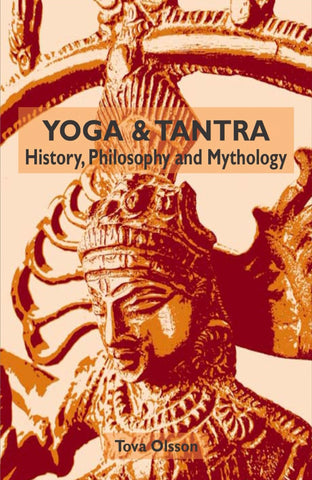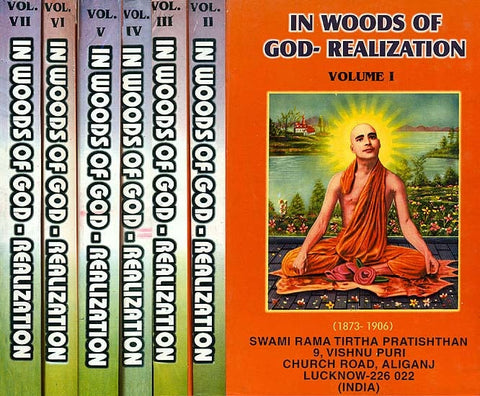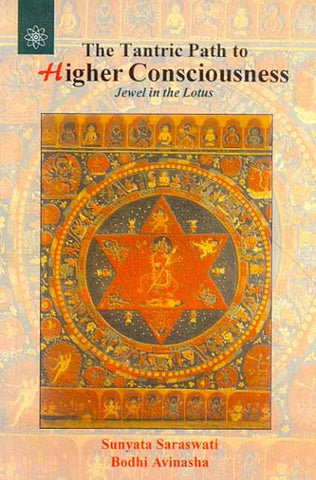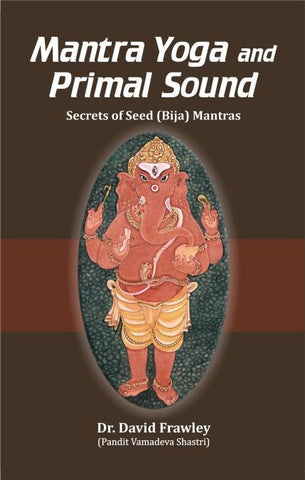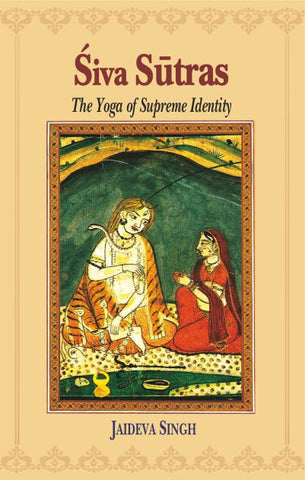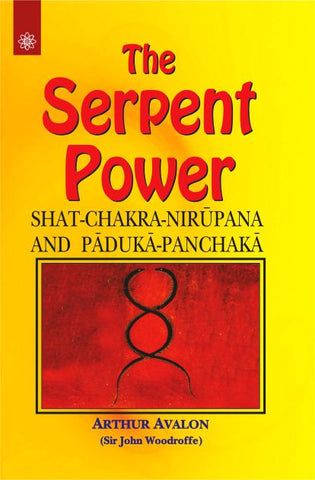Your cart is empty now.
The Integrity of the Yoga Darsana centres on the thought of Patanjali, the great exponent of the authoritative and Classical Yoga school of Hinduism and the reputed author of the Yoga-sutras. In this textual, historical, and interpretive study, Whicher offers a plausible and innovative reading of the 'intention' of the Yoga-sutras, namely that Yoga does not advocate the abandonment or condemnation of the world, but rather supports a stance that enables one to live more fully in the world without being enslaved by worldly identification. Challenging and correcting misperceptions about Yoga drawn by traditional and modern interpretations of the Yoga-sutras, the author argues for a fresh vision of the spiritual potential present in this seminal text, thereby contributing to our understanding of the meaning and practical relevance of Yoga and its reception today.
"A superb piece of work, this book provides an original, constructive, and insightful interpretation of the Yoga system."
Ian Whicher is Deputy-Director of the Dharam Hinduja Institute of Indic Research at the University of Cambridge.
This book centers on the thought of Patanjali (ca. second-third century CE), the great exponent of the authoritative and classical Yoga school (darsana) of Hinduism and the reputed author of the Yoga-Sutra. More specifically, the focus of this study is on Patanjali's central definition of Yoga (YS I.2), which states: "Yoga is the cessation of [the misidentification with] the modifications of the mind" (yogas cittavrttinirodhah). Our work is rooted in the conviction, implicity expressed so it seems by Patanjali himself, that an in-depth examination of Yoga-Sutra I.2 is helpful, indeed, we suggest crucial, for: (i) elucidating a clear response to the question, "What is the meaning of Yoga?" and (ii) exploring the integral relationship between theoria and praxis in the Yoga-Sutra. Although Yoga-Sutra I.2 is acknowledge by Yoga experts and scholars to be of great importance for our understanding of Yoga, a thoroughgoing and systematic inquiry into its meaning and practical relevance is noticeably lacking.
What is classical Yoga philosophy and how can it enrich our understanding of human nature? What is the relationship between self-understanding, knowledge, morality, and spiritual emancipation in Patanjali's thought? As a response to these questions I will argue that Patanjali's philosophical perspective has, far too often, been looked upon as excessively "spiritual" or isolationistic to the point of being a world-denying philosophy, indifferent to moral endeavor, neglecting the world of nature and culture, and overlooking the highest potentials for human reality, vitality, and creativity. Contrary to the arguments presented by many scholars, which associate Patanjali Yoga exclusively with asceticism, mortification, denial, and the renunciation and abandonment of "material existence" (prakrti) in favor of an elevated and isolated "spiritual state" (purusa) or disembodied state of spiritual liberation, I suggest that Patanjali's Yoga can be seen as a responsible engagement, in various ways, of "spirit" (purusa Self, pure consciousness) and "matter" (prakrti-the source of psychophysical being, which includes mind, body, nature), resulting in a highly developed, transformed, and participatory human nature and identity, an integrated and embodied state of liberated selfhood (jivanmukti).
I have attempted a careful textual, historical, and interpretive study that, it is hoped, results in a plausible and innovative reading of the "intention" of the Yoga-Sutra, namely, that it does not advocate the abandonment of the world for the successful yogin, but supports a stance that enables the yogin to live more fully in the world without being enslaved by worldly identification. In doing so I have tried to present a sustained argument for the above on the basis of a close (and cumulative) textual study within the tradition of classical Yoga itself. In this study I have endeavored to clarify the thought of Vyasa (ca. fifth-sixth century CE), whose commentary on the Yoga-Sutra entitled, the Yoga-Bhasya, illuminates our understanding of Patanjali's thought.
Thus I challenge and attempt to correct conclusions about classical Yoga philosophy drawn by traditional and modern interpretations of Patanjali's Yoga-Sutra. From a critical perspective, it is necessary to make efforts to integrate theories of reality and knowledge per se with hermeneutical reflection and human motivation within which the theories were devised. There is a crust of preconceived ideas surrounding Patanjali's Yoga and to unfreeze the Yoga-Sutra from the traditional reception that it has encountered in the Western world since the nineteenth century is no easy task. Millions of people today-both in the East (i.e., in India) and the West practice some form or forms of Yoga influenced by or derived from Patanjali's Yoga-Sutra. I have attempted to reinterpret a central feature of the Yoga-Sutra, namely, the objective of cittavrttinirodha or the cessation of the misidentification with the modifications of the mind, and provide a fresh vision of the spiritual potential present in this seminal text, thereby contributing to our understanding and reception of Yoga thought and spirituality. In order to do this I have felt it necessary to develop a comprehensive epistemological perspective in which the relation of identity and selfhood to the world is not severed due to a radical withdrawal from the world but is seen to be participatory in/with the world, allowing the yogin full access to the world through a mode of nonafflicted action. The interpretation of Patanjali's Yoga darsana presented in this study-which involves walking the line between an historical and a hermeneutic-praxis (or one might say here a theological or "systematic") orientation-counters the radically dualistic and ontologically oriented interpretations of Yoga presented by many scholars and suggests an openended morally and epistemologically oriented hermeneutic that, I maintain, is more appropriate for arriving at a genuine assessment of Patanjali's system.
Chapter I presents a thematic portrayal of early forms of Hindu Yoga, showing how selected Hindu texts can be said to exemplify or emphasize different meanings of or approaches to the term "Yoga." No attempt has been made to analyze yogic disciplines within Jainism or Buddhism, although mention is made in chapters 1 and 2 (in the notes) of the parallels, association, or relationship between Buddhism, Jainism, and Hindu Yoga-in particular the Yoga-Sutra of Patanjali. Admittedly, this is a very rich, diverse, and in many ways unexplored area of study, not least of which as it pertains to Jainism. However, it would require a necessary rigor and depth of analysis that, for want of space, lies outside the scope of this present study. While providing only a sketchbook account of Yoga that discloses a general view of Yoga within early Hinduism, the main purpose nevertheless of this background in Yoga thought. It is not intended for scholarly experts in Yoga or for those who already have an adequate background in ancient and classical Hindu Yoga and its development.
The next two chapters deal with more theoretical issues in Patanjali's Yoga. Chapter 2 outlines Patanjali basic philosophical stance and metaphysical schematic, while also referring to major similarities and differences between classical Yoga and classical Samkhya. Chapter 3 elaborates on Patanjali's epistemology by examining the nature, structure, and functioning (vrtti) of the mind (citta) through which the world and self-identity are experienced, perceived, and understood. The remaining chapters explore the notion of Yoga as a "theory-practice unification" by highlighting the transformative processes of the mind undergone by the yogin through the actual practice of Yoga. Chapter 4 presents a critical examination of the central term nirodha (cessation") as used in Yoga-Sutra I.2 and then proceeds with an analysis of the bipolar nature of the yogic path of practice (abhyasa) and dispassion (vairagya), including as well an well an overview of the "eight-limbed" (astanga) Yoga outlined by Patanjali. Chapters 5 and 6 discuss the meaning and practice of Samadhi and show how the experiences and insight attained in the multileveled process of Samadhi progressively lead to a disclosure of the soteriological goal of Yoga, that is, "aloneness (kaivalya).
Chapter 6 concludes with a section on "aloneness" and a consideration of the implications of Patanjali's Yoga for an embodied state of freedom While I suggest that Patanjali adopts a practical and provisional dualistic metaphysics, there is no proof that his system stops at dualism or merely ends up in a radical dualistic closure in which purusa and prakrti are incapable of "cooperating," establishing a "harmony," and achieving a "balance" together. Rather, as I argue, the Yoga-Sutra seeks to "unite" these two principles by correcting a misalignment between them, thereby properly aligning them, bringing them "together" through a purification and illumination of consciousness leading to the permanent realization of intrinsic being, that is, authentic identity. Moreover, this study suggests that Patanjali's Yoga darsana can be seen to embrace a maturation and full flowering of human nature and identity, a state of embodied liberation-one that incorporates a clarity of awareness with the integrity of being and action.
| Acknowledgements | ix | |
| Abbreviations | xi | |
| Introduction
|
1 | |
|
ONE Selected Background Material on the Development of Yoga in Early Hindu Thought |
5 | |
| The Term "Yoga" | 6 | |
| Yoga in the Vedas | 9 | |
| Yoga in the Upanisads | 13 | |
| Yogic Themes in the Bhagavadgia and Moksadharma | 21 | |
| Yoga and Samadhi | 27 | |
| The Pedagogical Dimension of Yoga: (i) The Practitioner (Yogin) and the Commitment to Practice |
31 | |
| The Pedagogical Dimension of Yoga: (ii) The Spiritual Guide or Preceptor (Guru) |
34 | |
| Concluding Remarks
|
38 | |
|
TWO The Yoga-Sutra: Introduction and Metaphysical Perspective |
41 | |
| Introduction to Patanjali and the Yoga-Sutra | 41 | |
| Distinguishing Samkhya and yoga, and the Transition to the Yoga-Sutras | 50 | |
| Prakriti as Viewed in the Yoga-Sutras | 58 | |
| The Purusa-Principle in the Yoga-Sutra
|
78 | |
|
THREE The Mind (Citta): Its Nature, Structure, and Functioning |
89 | |
| Citta | 91 | |
| An Introduction to Karma, Samskara, and Vasana | 97 | |
| Introduction to Yoga Epistemology | 107 | |
| Vrtti | 109 | |
| Klista- and Aklista-Vrtti | 121 | |
| Samyoga | 130 | |
| Theory of Reflected Consciousness in Yoga | 135 | |
| A Closer Look at "Perception" in the Yoga-Sutra
|
143 | |
|
FOUR Nirodha, Yoga Praxis, and the Transformation of Mind |
151 | |
| Nirodha : The Foundation of Yogic Praxis | 151 | |
| Nirodha (Cessation): An-nihilation/Negation or Transformation of the Mind? | 154 | |
| Abhyasa (Practice) and Vairagya (Dispassion) | 172 | |
| A Preliminary Look at the Meaning and Practice of Samadhi | 181 | |
| Preparation for Samadhi | 184 | |
| An Overview of the Astanga-Yoga
|
190 | |
|
FIVE Cognitive Samadhi |
201 | |
| Samadhi: The Heart of Patanjali's Soteriological Methodology | 204 | |
| An Analysis of Yoga-Sutra I.41 | 216 | |
| Vitarka-Samadhi | 222 | |
| Vicara-Samadhi | 229 | |
| Ananda-Samadhi | 238 | |
| Asmita-Samadhi | 243 | |
| A Further Look at Cognitive Samadhi
|
253 | |
|
SIX From Knowledge to the "Aloneness" of the Knower |
259 | |
| The Soteriological Role of Samskara in Yoga | 259 | |
| Enstasy (Asamprajnata-Samadhi) | 265 | |
| "Aloness" (Kaivalya): Implications for an Embodied Freedom A Final Analysis and Assessment of the Yoga-Sutra |
275 | |
| Conclusion | 301 | |
| Notes | 309 | |
| Bibliography | 387 | |
| Index | 401 | |
Delivery and Shipping Policy
- INTERNATIONAL SHIPPING
- Rs.1000-1100/kg
- ESTD. Delivery Time: 2-3 weeks (depending on location)
- Bubble Wrapped with Extra Padding
- NATIONAL SHIPPING
- NCR: Rs. 30/half kg
- Standard: Rs. 80/half kg
- Express shipments also available on Request
- ESTD. Delivery Time: Ranging from 1-4 days up to 7 business days (Depending on your choice of Delivery)
- TRACKING
- All orders; national or international, will be provided with a Tracking ID to check the status of their respective orders
- Depending on the Shipping Service, Tracking ID may be used on their respective tracking portals
Frequently Asked Questions (FAQs)
Domestic Shipping: 3-4 Days (after shipping)
International Shipping: 1-2 weeks (based on your location)
You will receive an email once your order has been shipped or you can email us if you didn't receive tracking details (info@mlbd.co.in)
Every book that we sell is the latest edition except all the rare books
Yes, we do provide free shipping, only on domestic orders (within India) above Rs.1500





